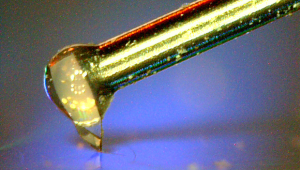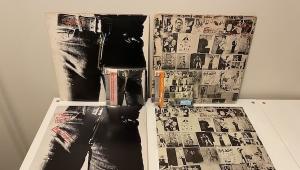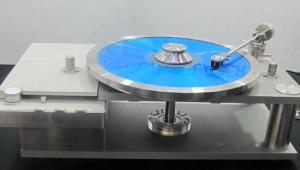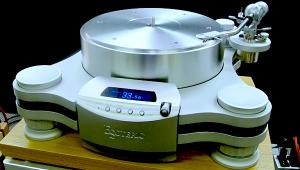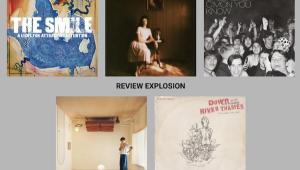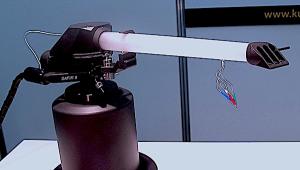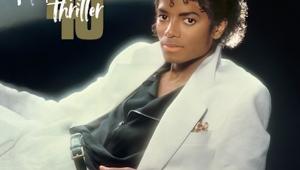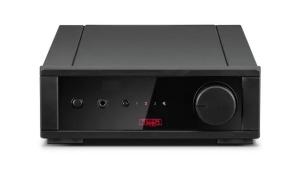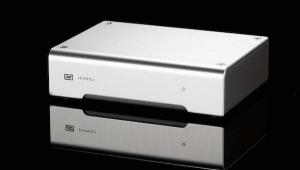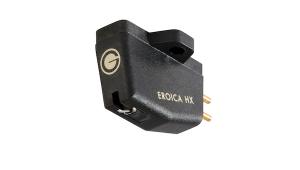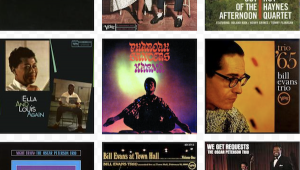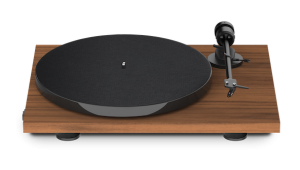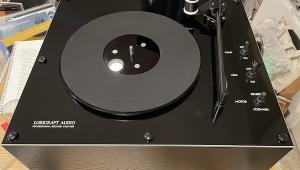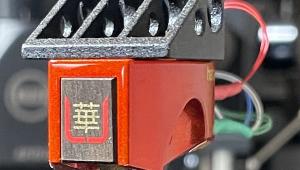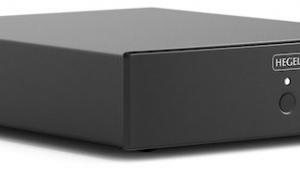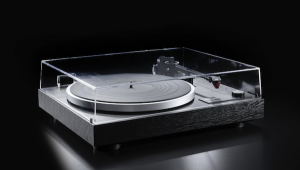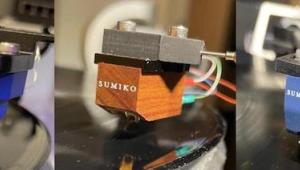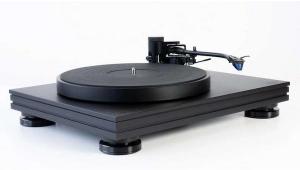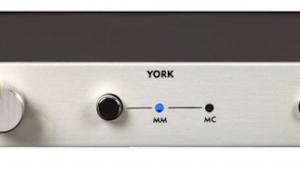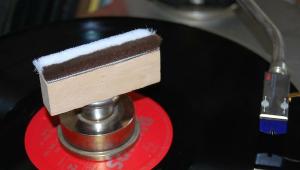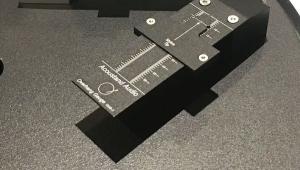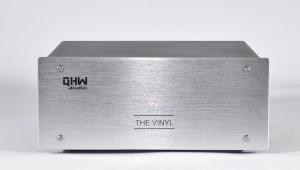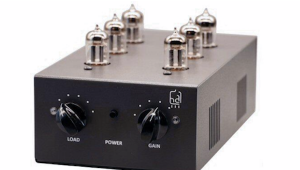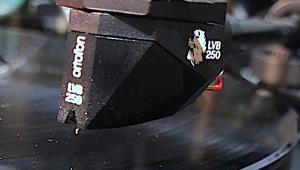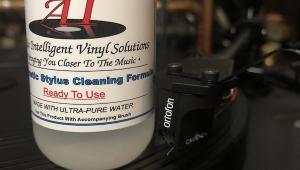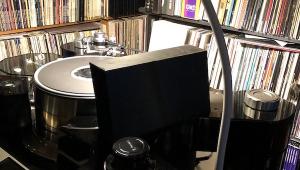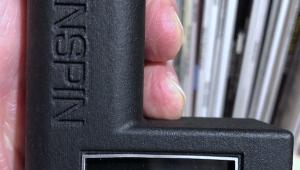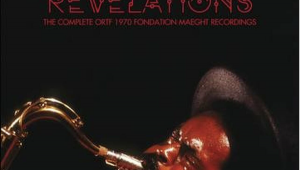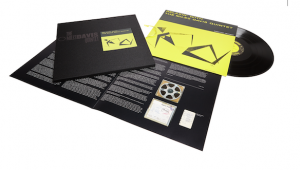"Ask Mikey" Fires Up With Questions About USB Microscopes, the Quality of Ron McMaster's Lacquer Cutting, Etc.
-M.K.
The microscope I use is the Dino-Lite AM313. I will soon post complete instructions on how to use this microscope to take the photo and interprets the results. The Audio Magazine article is available for download on this site. I obtained permission to republish it from Bonier Corporation, which not controls the rights to Audio Magazine content. The link to it is embedded in this story:
I use a WallyTractor protractor but Wally's ability to produce them is spotty. There are many good ones available. I guess a "round up" of them would make a useful story.
-Mikey
P.S.: If you want to know what the photo is all about you're going to have to ask. Nice girls don't tell!
A Reader's SRA Experience
Hi:
Met you at the Audio Alternative event. I was the guy with the pictures of the Goldfinger.
Wanted to let you know I had an extended email exchange with Musical Surroundings this past week about my inability to set the SRA on my Goldfinger (v2) below 94.5 degrees.
I provided pictures, now with the cartridge sitting on a CD as suggested by you. They were very cordial and contacted ClearAudio about my issue.
However, they wouldn't acknowledge it as a problem and could only suggest I increase VTF (2.8g to 3.2g), which would have the side effect of a reduction in the SRA - in my case, to 92.4 degrees.
I understand how potentially expensive it could be for the major manufactures to acknowledge this issue as a defect. Perhaps the best we can hope for is that they will circle back with their suppliers and eventually provide cartridges in the future without this problem.
By the way, although increasing VTF probably has it's own sonic effects, getting the SRA on my Goldfinger to 92 has made a major change to my system. In comparison to 94+ degrees, at 92 the high frequencies no longer seem to project prominently and all highs/mids/lows seem coherent, if that description makes any sense. ClearAudio tells me 3.2g is safe for my cartridge so I'm going to stick with it for a while. I'm enjoying 92 degrees that much!
Thanks for your setup advice (and thanks for attending the Audio Alternative event).
- Michael M.
Is Ron McMaster a Master Mastering Engineer? Or Not?
Hi Michael:
Having recently read the piece about the Tom Waits debacle (the LPs cut by Ron McMaster) it made me think about a couple of LPs I have recently purchased and been hugely disappointed with. They are...
Gregg Allman – Low Country Blues (Produced by T-Bone Burnett'/Mixed by Mike Piersante); Mastered for vinyl by Ron McMaster)
Steve Earle – I’ll Never Get Out Of This World Alive (Produced by T-Bone Burnett'/Mixed by Mike Piersante); Mastered for vinyl by Ron McMaster)
Robert Plant/Alison Krauss – Raising Sand (Produced by T-Bone Burnett'/Mixed by Mike Piersante); Mastered for vinyl by Ron McMaster)
The thing that is bugging me, is the problem with Ron McMaster cutting the vinyl from high-res files (ha!) or is it T-Bone Burnett’s production.
They both sound as dull as dishwater (as we say over here), the sound is dull, muddy, indistinct and lacking any dynamics whatsoever.
I was just wondering if you had heard any of the LPs or anything cut by Ron recently or produced by T-Bone Burnett. If so what are your opinions on them!
Regards James, Dublin, Ireland.
PS: Absolutely loved The Tracking Angle, recovered from its demise when you launched Musicangle website, and now here you go again with AnalogPlanet, keep up the great work.
I thought the Plant/Krauss LP sounded pretty good actually. A lot of bass though. That's on the recording because I also have the 96/24 download and it sounds similar.
T-Bone Burnett's work varies greatly. Some recordings are great, some are thick and muddy as you describe. He seems to know what he's doing though, so I guess that's the sound he wants. I'm not sure we always do though!
As for Ron McMaster, while he's not considered one of the "audiophile masters" like Kevin Gray, Doug Sax, the late George Marino and Bernie Grundman (etc.), I wonder when Capitol last upgraded its analog mastering chain? On the other hand, if you read the review of Cassandra Wilson's Blue Light 'til Dawn elsewhere on this site, you'll read that the sonics are superb on that double LP set from Pure Pleasure and that one was cut by Ron McMaster at Capitol, so he is quite capable of doing good work.
-Mikey
PS: Thanks for the kind words about my work!
Michael:
Keep spreading the word (about SRA and cartridge manufacturing tolerances), this is so important. It is not right that 4 people can buy $5K+ cartridges from the same manufacturer and 1 or 2 will have examples with beginning SRA's that are almost in-correctable. I am sure you have seen a much higher percent of in-consistency than should occur under normal manufacturing processes. It is not so much an attack of the manufacturer, but an education.
How many manufacturers are you aware of that use USB microscopes? I am 100% convinced they would not want to put out products with this level of inconsistency. The more this issue comes to the forefront the more they will look into solutions to eliminate this inconsistency.
I for one am glad that I own a USB microscope (and know how to use it) and would never purchase a new cartridge without the explicit understanding that I can measure it and confirm that it's SRA is up to standard. But this hardly is realistic for the majority of audiophiles, nor should it be.
Please keep spreading the word.
Thank you and be Well.
JM
I know that after I wrote about the Lyra Atlas, the importer (AudioQuest) and the manufacture both instituted a comprehensive QC regimen that includes the use of a USB microscope. Every cartridge imported by AudioQuest gets looked at under the microscope.
-Mikey
Mikey:
Got the Audio Desk Ultrasonic Record Cleaning Machine yesterday.
You can put this on your site - my opinion:
- cleaning 9.5/10
- hearing extra fine detail that you didn't know was there 11/10
- construction detail 3/10
The thing that really pisses me off on a US $4000 machine is :
(i) that the record scrapes the side of the "v" rather than run in the midde of the "v" when you are cleaning it -they should have made it user "adjustable" or had a bit of plastic in the "v" to stop the record scraping the paint and the metal.
(ii) no (perspex) cover over the main entry area where you place the record in the machine.
(iii) the drain plug - should have a mini tap rather than just the screw. every time you want to drain it - you are going to get water over the bottom lip of the unit and everywhere else!
(iv) the chrome vertical strips on the corner don't go all the way up to give a neat fit (a few mm's gap)
For a unit that US $4000 - the design fit and finish is not great. That's the pity - it could have been GREAT!
So much for the Germans being better at building everything - you guys in the US should have built it !!!!!!
Eugene H.
Well Eugene, I agree about the unit's performance. It is easily the best record cleaning machine I've ever used and I bought the unit I reviewed. I'll soon post that review here. It originally appeared in Stereophile last month.
I didn't notice the scraping but I've looked and that really doesn't bother me. Yes, they should supply a plastic cover, but one can easily be made or adapted from something else.
The drain plug is sort of an issue. Because you clean a few hundred records before emptying it, it's not like the typical machine. Plus it's compact. So I just pick it up, put it next to my sink and remove the drain plug. No mess. Because the fluid is under pressure in the tank, a hose and clamp might be a much worse solution to the problem. If it worked loose, you'd have a gallon of fluid on the floor!
We can both agree that minor quibbles aside, it's a swell cleaning machine!
Hello Michael,
I would like to know your opinion on which line conditioner I would need to use that would be compatible with a Rotel Receiver and CD player, also with Definitive Speakers? I really appreciate any assistance you can offer me on this matter.
Ted W.
Most line conditioners will be "compatible" in the strictest sense of the word but which would be best? That's difficult to say. However based on what I learned and saw with actual measurements, I would not use a "T" filter based conditioner (one that makes use of capacitors) on any power amplifier. Amps draw current. "T" filter type line conditioners certainly will filter out noise, which is good, but they also starve the amp for current, which is not good!
That is my opinion and I am sticking with it. You ought to be able to buy on a return basis any line conditioner you are considering so trying is believing. You also might decide that no conditioner beats any conditioner. Results vary.


